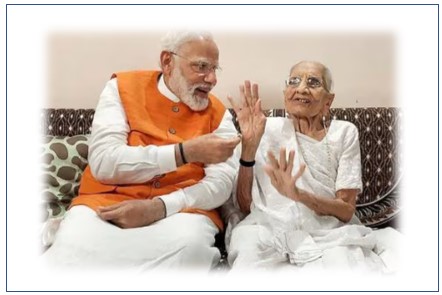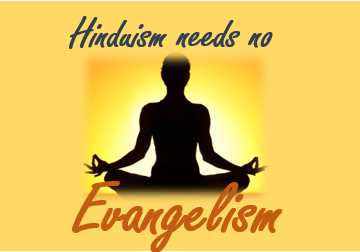Back in 2014, during runup to General Election, as Modi ascent to power became certain myself and several others who wanted to give themselves and their children a better life in India, hoped fervently that Modiji should win and we were active on social media.

Suddenly, out of the blue I got a call from a relative using a berating voice, for being active in promoting Modiji. Little did this person know my wife worked for BJP in Blore, for a short while. I was an ardent admirer of BJP a political party which keeps talking of Ideology. Even as individuals if we don’t have ideological moorings and more of opportunists we end up in the lap of some swamiji or masters.
The same person said, selecting a sanyasi as CM does not bode well. I did not give any reply. Replying would necessarily include justifying. I generally do not do this.
This is the reply.
India’s post-Independence history, as chronicled in our textbooks, often reads like a litany of setbacks and missed opportunities-a narrative that can feel dispiriting. Yet, in the last decade, the rise of Narendra Modi has marked a dramatic and transformative chapter, a veritable turning point that stands apart from the gloom of the past.
To understand the sheer timing and adroitness with which Modiji has reshaped the nation, let me recount four incidents that, in hindsight, seem almost prophetic.
First, in the late 1980s, I was a regular reader of India Today, where Aroon Purie’s incisive journalism left a mark on my thinking and particularly articulation. I remember reading about Bhure Lal, the so-called “Hunterwala Magistrate,” who quelled riots with an iron hand. At the time, I believed that only by letting such conflicts run their course and holding all sides accountable could true justice be served-a lesson that would play out on a national scale decades later.
Second, about sixty years ago, our family friend Mr. Jahagirdhar, a dedicated RSS pracharak, attended a shakha meeting. After sometime he noticed everyone looking at his back and giving out a surprise. His recount of the incident ‘I noticed a colored drawing on my man’s shirt and asked the person behind me about it. The youth replied, “It’s a map of Bharat Mata. I have drawn it; now you must bring it closer to your heart.” I asked his name. That young man was none other than Narendra Damodardas Modi’.
Third, in 1998–99, another friend, Mr. Suryakant Rao a BJP corporator, was tasked with assisting Modi-then not yet Chief Minister-during a visit to Bangalore. He observed something exceptional in Modi: a quiet glow and unwavering steadiness that set him apart even then.
Fourth, in the late 2000s, while printing books at Shakti Printers in Mysore, I heard a story from the proprietor’s father, a Ramakrishna Math associate. He recalled a swami’s prophetic words from the 1950s: that someone with a name reminiscent of Swami Vivekananda would one day rule India and transform it.
These episodes, scattered across decades, now seem to foreshadow the remarkable impact Modi has had in the last 10–12 years.
Mr. Rajinikanth, the iconic Tamil superstar, said in a function, Mr. Modi and Mr. Shah are like Chanakya and Chandragupta. We don’t know who is who. Or do they switch roles? No one is sure. One thing is certain. They have kept the opposition completely out of step constantly guessing.

One TV Channel speaker said these two have killed Chanakya and come here. [Note killing means overcoming]
Congress President Kharge has accused the BJP of treating opponents as enemies, but Modi’s approach to both opposition and governance is far more nuanced, structured by a clear hierarchy and a pragmatic sorting of friends and adversaries, both within India and abroad.
It is this strategic clarity and relentless drive that have defined Modi’s leadership-a subject I will now explore in depth.
This is the first topic I will address.
Modi’s hierarchy of opposition is structured as follows:
- Non-corrupt and family-driven – Highest Grade
These opponents, despite their family-driven nature, maintain a clean image and are treated with a certain level of respect. Modi’s approach here is to engage cautiously, recognizing their political influence but holding them accountable without unnecessary confrontation. - Corrupt and non-family and not anti-national – One grade lower
This group is viewed with suspicion but not outright hostility. Modi’s strategy involves exposing corruption while allowing space for political dialogue, aiming to isolate them from their support base gradually. - Corrupt and family not anti-national – Several grades lower
Here, the focus intensifies on dismantling entrenched networks of nepotism and corruption. Modi’s administration actively works to weaken their hold through legal and administrative measures, signaling zero tolerance for misuse of power. - Corrupt, family-driven, and anti-national – Lowest Grade
This category is treated as the most dangerous and is dealt with firmly, often through stringent law enforcement and political isolation. Modi’s government views them as threats to national security and sovereignty, warranting decisive action.
This framework explains the response to Mr. Kharge’s accusation. Congress is viewed as a Corrupt, Family Driven, and Anti National. Lowest grade.
Mr. Annamalai misunderstood this hierarchy and offended the late Mrs. Jayalalitha, forgetting that Modiji respected her because she was a nationalist who prioritized India’s interests above all.
Next, let’s look at how Modi categorizes foreign countries:
- Category A: Those who have helped India in times of need – Russia, France, Israel
These countries enjoy a privileged relationship based on mutual trust and strategic cooperation. Modi has nurtured these alliances through defense deals, technology transfers, and diplomatic support during critical moments. - Category B: Trading and business partners – USA, Russia, Israel, China
While economic ties with these nations are strong, Modi balances pragmatism with caution, especially with China, ensuring that trade benefits India without compromising national interests. - Category C: Countries needing India’s help – Africa, Sri Lanka
Modi’s outreach to these nations is rooted in soft power and development assistance, positioning India as a responsible regional leader and partner in growth. - Category D: Inscrutable enemies – China
Despite economic engagement, China remains a strategic challenge. Modi’s policy here is vigilant containment combined with diplomatic efforts to manage tensions without escalation. - Category E: Outright enemies – Pakistan
Relations with Pakistan are marked by deep mistrust and security concerns. Modi’s approach is uncompromising on terrorism and border security, coupled with efforts to isolate Pakistan diplomatically.
Finally, here is how Modi has organized his cabinet:
Powerful Ministries
- Home: The most crucial ministry, led by a politically powerful minister, Modi’s Chanakya, entrusted with internal security, law and order, and intelligence coordination. This ministry is central to maintaining political stability and implementing key domestic policies.
- Finance: A powerful ministry, led by a less politically prominent minister who likely works closely with the PMO to drive economic reforms, budget management, and fiscal policy, ensuring macroeconomic stability and growth.
- Defence: The most glamorous ministry, headed by a politically neutral figure to maintain professionalism and focus on modernization, strategic defense partnerships, and military preparedness without partisan influence.
Operational Ministries
- Railways: Administered by the most well-informed bureaucrat, this ministry focuses on infrastructure expansion, technological upgrades, and improving passenger experience, reflecting Modi’s emphasis on connectivity and modernization.
- Commerce: Managed by a knowledgeable problem solver, this ministry drives trade policies, export promotion, and industrial growth, supporting India’s ambitions as a global economic powerhouse.
- Roads and Transport: Politically strong in Nagpur, operating independently, this ministry spearheads the development of national highways, rural connectivity, and urban transport projects, critical for economic integration.
BJP State Chief Ministers
All are young, non-controversial, politically strong locally, and disciplined workers. Modi’s selection reflects a strategy to promote fresh leadership, minimize factionalism, and ensure effective governance aligned with central policies, fostering a unified party image across states.
Modi’s Achievements in the last 12 years. Let us list them:
PM Modi’s Achievements in the Last 12 Years (2014–2025)
Economic Growth and Reforms
- India’s economy has doubled in size over the past decade, with the country emerging as a global growth engine and a preferred destination for manufacturing and investment.
- Major tax reforms, such as the introduction of the Goods and Services Tax (GST), have streamlined the tax structure.
- Corporate tax rates for foreign companies have been reduced from 40% to 35% to attract more investment.
- The government abolished the 31% angel tax on startups, providing relief and boosting the innovation ecosystem.
- Custom duties were rationalized to support key sectors, including electronics and pharmaceuticals.
Infrastructure and Industrial Development
- ₹15 lakh crore worth of investment projects were initiated in the first 100 days of Modi’s third term alone, with a focus on infrastructure, including new mega ports, metro rail expansions, and airport upgrades.
- The National Industrial Corridor Development Program is underway, with 12 new industrial zones being developed and linked to national highways.
- The Smart Cities Mission and Smart Villages Initiative have aimed to modernize urban and rural infrastructure, including internet access, clean water, and sanitation.
Social Welfare and Poverty Alleviation
- Over 60 crore (600 million) people have benefited from schemes providing housing, toilets, gas connections, drinking water, electricity, monthly grain rations, and health insurance up to ₹5 lakh under Ayushman Bharat.
- The Pradhan Mantri Ujjwala Yojana has distributed over 80 million LPG connections to women in poor households, improving health and reducing indoor pollution.
- The Pradhan Mantri Kisan Samman Nidhi Yojana has transferred ₹3 lakh crore directly to 9.5 crore farmers.
- Housing for All by 2022 aims to eliminate slums by building affordable homes for the urban poor.
Healthcare Initiatives
- Ayushman Bharat is the world’s largest publicly funded health program, now covering all senior citizens aged 70 and above.
- The government is expanding medical education with 75,000 new medical seats planned.
- Innovations like drone-based medical deliveries and digital health solutions (e.g., U-WIN portal) have been launched5.
Education and Youth Empowerment
- The New Education Policy blends traditional values with modern curricula, aiming to make India a global education hub.
- Significant investments in skill development and employment generation, including a ₹10,000 crore New Employment Generation Scheme, which will provide internships to one crore youth.
- Increased public expenditure on education and technical education.
Women Empowerment
- Over 90 lakh self-help groups formed under the Deendayal Antyodaya Yojana, with schemes like Lakhpati Didi enabling 11 lakh women to earn at least ₹1 lakh annually.
- Social justice initiatives, such as the passage of the Waqf (Amendment) Bill, 2025, safeguard the rights of marginalized groups, women, and children.
Agriculture and Rural Development
- Enhanced food security measures and direct benefit transfers to farmers.
- Rural electrification, road connectivity, and clean water supply projects have improved the quality of life in villages.
Green Energy and Sustainability
- The Pradhan Mantri Surya Ghar Free Electricity Scheme brought solar power to over 2.5 lakh households, supporting the shift to renewable energy.
- Increased budget allocation for the National Mission for Green India and ambitious carbon market reforms.
Security, Defence, and Foreign Policy
- Strengthening of internal and external security, modernization of defence, and robust foreign policy have enhanced India’s global stature.
- India became the fourth country in the world to achieve satellite docking and undocking capabilities, marking a major milestone in space technology.
Digital India and Technology
- The Digital India initiative has transformed governance, financial inclusion, and digital infrastructure, serving as a model for other countries.
- Expansion of e-governance, digital payments, and online service delivery.
Summary Table: Key Sectors and Achievements
| Sector | Major Achievements (2014–2025) |
|---|---|
| Economy | Doubled GDP, GST, lower corporate taxes, startup ecosystem boost |
| Infrastructure | ₹15 lakh crore projects, smart cities/villages, industrial corridors |
| Social Welfare | 60 crore+ beneficiaries, housing, LPG, health insurance, food security |
| Healthcare | Ayushman Bharat, expanded medical seats, digital health, drones |
| Education | New Education Policy, skill development, increased spending |
| Women Empowerment | Self-help groups, Lakhpati Didi, Waqf Bill |
| Agriculture | Direct transfers to farmers, rural development |
| Green Energy | Solar schemes, increased green mission funding, carbon market reforms |
| Security/Defence | Modernized defence, satellite docking, robust foreign policy |
| Digital India | E-governance, digital payments, online services |
PM Modi’s tenure since 2014 is marked by large-scale economic reforms, infrastructure expansion, social welfare, technological innovation, and global leadership, with a focus on inclusive development and a vision for a “Viksit Bharat” (Developed India)
The single most profound impact of Narendra Modi’s leadership is the remarkable benchmark he has set across every facet of India’s political and administrative landscape. From sweeping reforms in education and policing to pioneering advancements in space technology and nurturing a vibrant startup ecosystem, Modi’s tenure has redefined what effective governance and visionary leadership look like in modern India. His bold initiatives and unwavering focus on development have not only accelerated India’s progress but also created a comprehensive playbook for future leaders to follow.
What makes this benchmark truly extraordinary is its breadth and depth-touching every corner of the nation and every sector of society. Modi has shown that transformative change is possible through decisive action, strategic planning, and inclusive growth. This legacy is now a powerful foundation upon which the people of India can build.
The real test lies ahead: it is up to every citizen, entrepreneur, policymaker, and institution to embrace these guiding principles and carry forward the momentum. By doing so, India can realize its full potential as a secure, prosperous, and developed nation, standing tall on the global stage.
Modi’s era has set the bar high-now it’s India’s collective responsibility to soar even higher.
I am obsessed with this superhuman acheiver. Why Not?
Share this with your friends. Modiji needs our support always.






